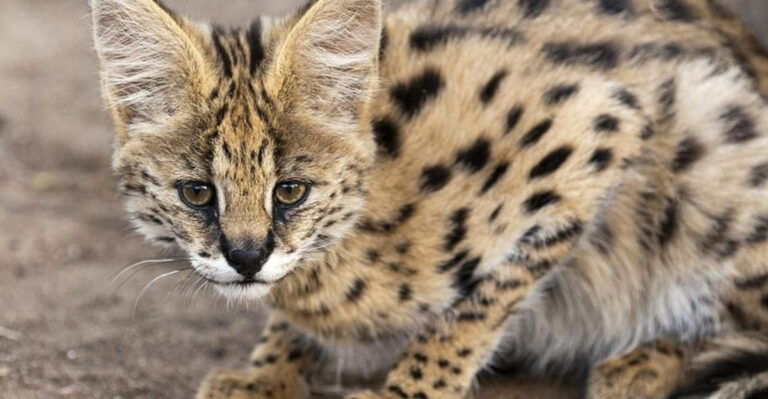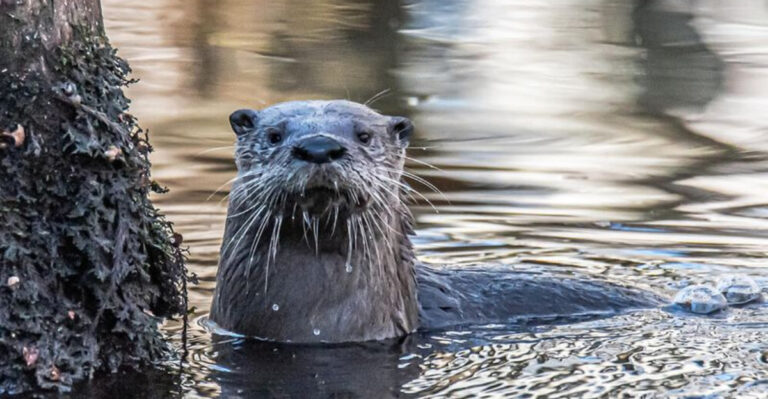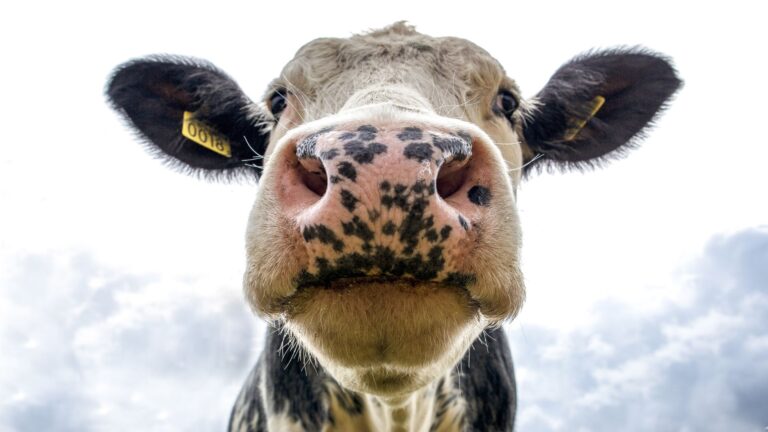12 Fascinating Turtle Species You Should Know About

Turtles are some of the oldest creatures on our planet, having survived for over 200 million years. These armored reptiles come in all shapes and sizes, from tiny pond dwellers to massive ocean navigators.
Let’s explore some of the most remarkable turtle species that showcase the incredible diversity of these ancient animals.
1. Green Sea Turtle
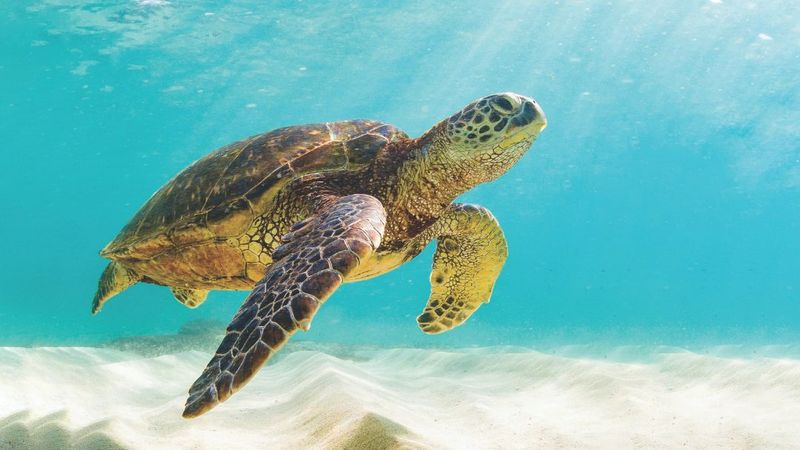
Named for their greenish body fat, not their shells! These magnificent mariners can weigh up to 700 pounds and travel thousands of miles between feeding grounds and nesting beaches.
Unlike other sea turtles, adult Green Sea Turtles are herbivores, munching exclusively on seagrasses and algae. Their vegetarian diet contributes to their slow growth but impressive lifespan of 80+ years.
2. Box Turtle
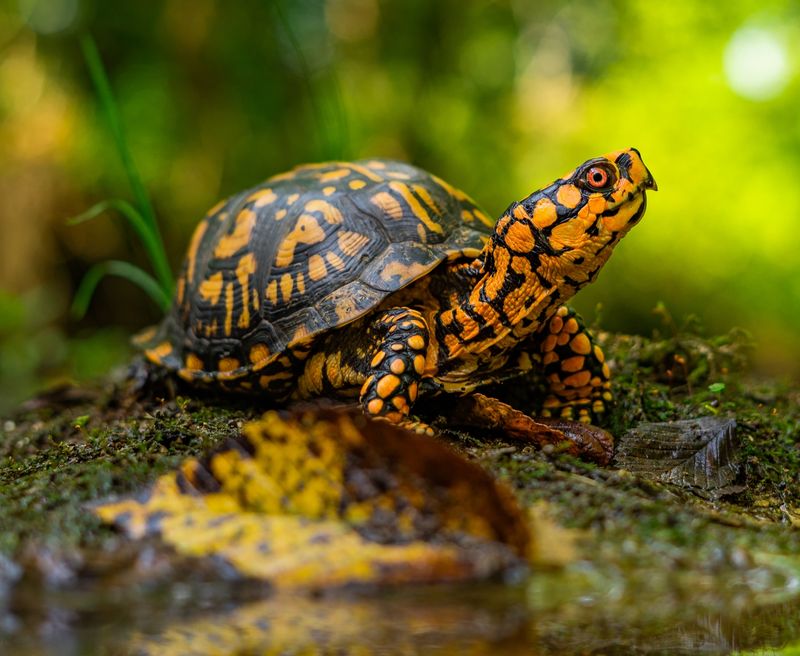
Masters of self-defense, Box Turtles can completely close their hinged shells to hide from predators. No other North American turtle has this remarkable ability!
These woodland wanderers may look small and vulnerable, but they’re incredibly resilient, potentially living 100+ years in the wild. Each Box Turtle has a unique pattern, like a fingerprint, making every individual truly one-of-a-kind.
3. Kemp’s Ridley Turtle
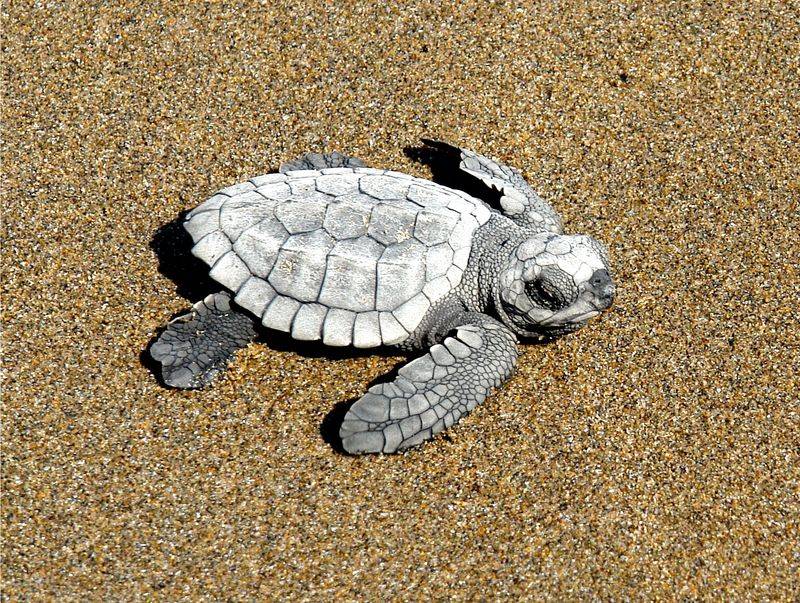
The rarest sea turtle in the world faces an uncertain future. Kemp’s Ridley populations plummeted in the mid-20th century, with fewer than 250 nesting females remaining by the 1980s.
Conservation heroes have helped numbers rebound through beach protection and fishing regulation. These small but mighty turtles are known for their synchronized nesting events called ‘arribadas’ where hundreds come ashore simultaneously.
4. Leatherback Sea Turtle

Ocean giants with ancient origins! Leatherbacks can reach over 7 feet long and weigh up to 2,000 pounds. Their flexible, leathery carapace sets them apart from hard-shelled relatives.
Jellyfish connoisseurs by nature, they consume hundreds daily with specialized throat adaptations. These remarkable reptiles can dive deeper than any other turtle—reaching depths of 4,000 feet—and maintain warm body temperatures in frigid waters.
5. Painted Turtle
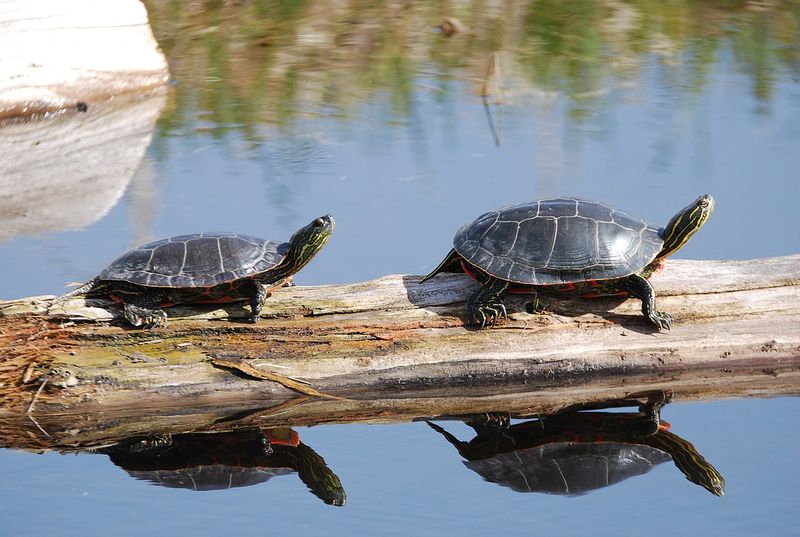
America’s most widespread turtle sports vibrant red and yellow stripes that look hand-painted. These colorful creatures are sunbathing champions, often seen crowded together on logs, competing for the best basking spots.
Female Painted Turtles possess a remarkable superpower—they can store sperm for years before using it to fertilize eggs! These adaptable reptiles thrive in ponds, lakes, and slow-moving streams across the continent.
6. Alligator Snapping Turtle

Living fossils with dinosaur-like appearance, Alligator Snappers are the largest freshwater turtles in North America. Their prehistoric look features a spiked shell, hooked beak, and muscular build.
The most fascinating trick? Their tongue mimics a wriggling worm to lure fish! This ambush predator can remain motionless underwater for up to 50 minutes, patiently waiting for prey to approach its clever tongue-lure.
7. Galápagos Tortoise
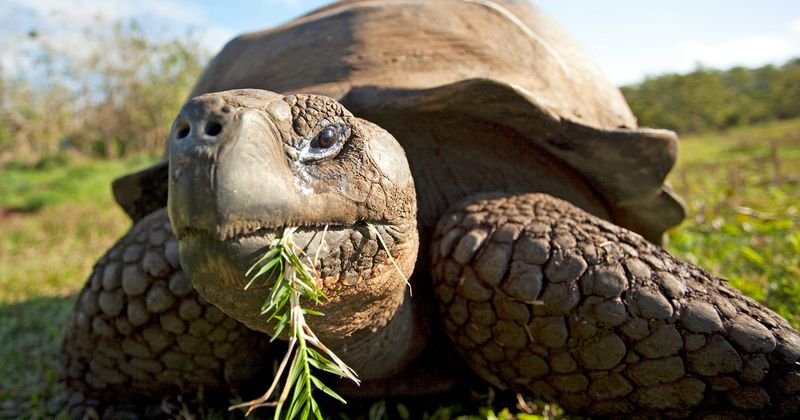
Giants of the reptile world, these magnificent creatures can weigh over 500 pounds and live beyond 150 years! Charles Darwin’s observations of their island-specific shell variations helped inspire his theory of evolution.
Each island population developed unique shell shapes—domed for grazing islands, saddleback for reaching higher vegetation. Sadly, only 10 of the original 15 subspecies remain today, with conservation efforts working tirelessly to protect these gentle giants.
8. Hawksbill Turtle
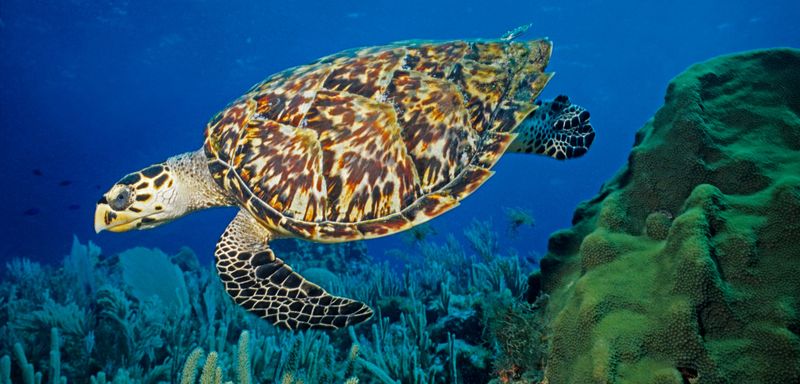
Jewels of the coral reef, Hawksbills possess the most stunning shells in the turtle world—amber background with flaming patterns that sadly made them targets for the tortoiseshell trade.
Sharp, curved beaks help these specialized feeders extract sponges from reef crevices. As they feed, Hawksbills maintain reef health by preventing sponges from overtaking coral. Their population has declined by over 80% in recent decades.
9. Spiny Softshell Turtle

Speed demons of the turtle world! With pancake-flat bodies and leathery shells, Spiny Softshells can outswim most freshwater turtles and even sprint surprisingly fast on land.
Their long, snorkel-like snouts allow them to breathe while mostly buried in sand or mud. These nervous creatures are lightning-quick to flee at the slightest disturbance, disappearing beneath the water with remarkable agility.
10. Red-Eared Slider
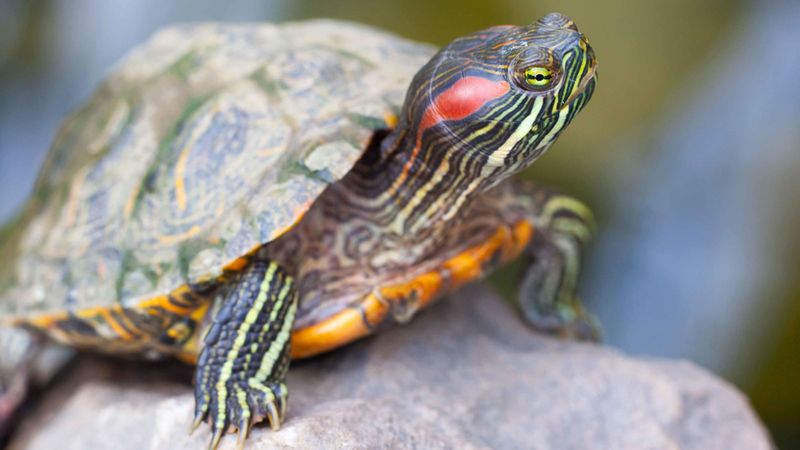
Recognizable by their distinctive red stripes behind each eye, these popular pond dwellers have become unwitting world travelers. Native to the Mississippi River basin, they’ve been introduced globally through the pet trade.
Adaptable and hardy, Red-Eared Sliders thrive in various environments. Their name comes from their habit of quickly sliding off basking spots when startled. Unfortunately, released pets often outcompete native turtle species.
11. Aldabra Giant Tortoise
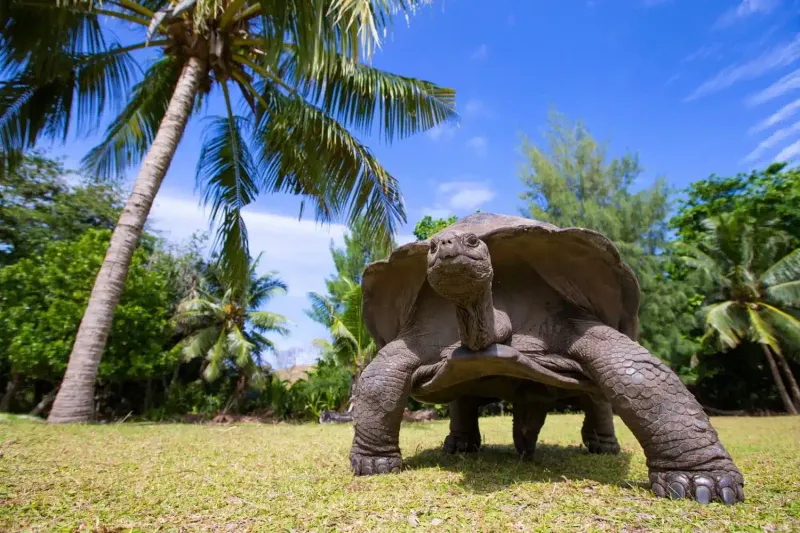
Second largest tortoises alive today, Aldabra Giants can weigh over 500 pounds and reach 150 years old! Their massive domed shells provide protection while their long necks help reach vegetation.
Native to a remote coral atoll in the Seychelles, these resilient creatures survived widespread tortoise hunting that drove many related species extinct. They’re ecosystem engineers, creating pathways through vegetation and dispersing seeds across their island home.
12. Olive Ridley Turtle
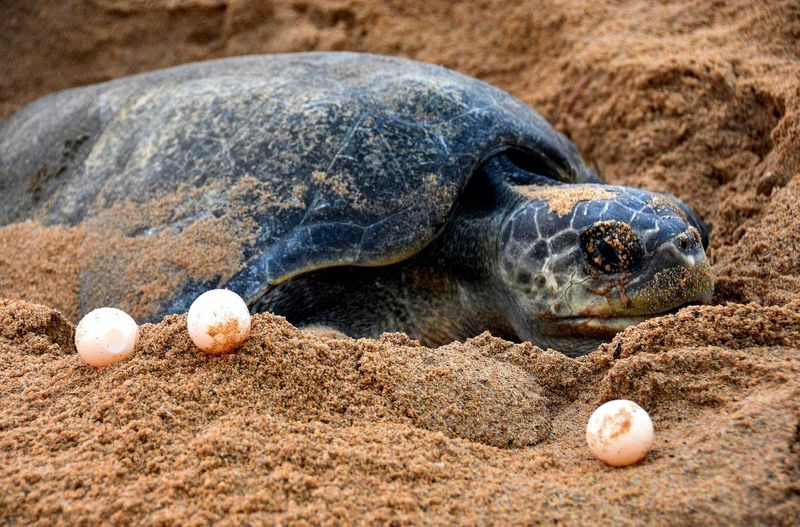
Synchronized nesting champions! Olive Ridleys create one of nature’s most spectacular events—arribadas—where thousands storm beaches simultaneously to lay eggs, overwhelming predators with sheer numbers.
Despite being the most abundant sea turtle, they face serious threats from fishing nets and beach development. Their heart-shaped shells and olive-gray coloring make them distinctive among sea turtles, though they’re the smallest species at just 100 pounds.

